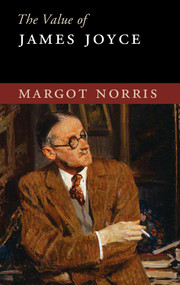Book contents
- Frontmatter
- Contents
- 1 Introduction: Democratic and Cosmopolitan Joyce
- 2 The Significance of the Ordinary in Dubliners, Portrait, and Ulysses
- 3 Irish Nature, Irish City: The Complexities of Place
- 4 Joyce's Cultures, the Classical, and the Popular
- 5 The Styles of Ulysses and Finnegans Wake: Moods, Voices, and Language
- Notes
- Bibliography
- Index
2 - The Significance of the Ordinary in Dubliners, Portrait, and Ulysses
Published online by Cambridge University Press: 05 March 2016
- Frontmatter
- Contents
- 1 Introduction: Democratic and Cosmopolitan Joyce
- 2 The Significance of the Ordinary in Dubliners, Portrait, and Ulysses
- 3 Irish Nature, Irish City: The Complexities of Place
- 4 Joyce's Cultures, the Classical, and the Popular
- 5 The Styles of Ulysses and Finnegans Wake: Moods, Voices, and Language
- Notes
- Bibliography
- Index
Summary
Richard Ellmann said it best: “Joyce's discovery, so humanistic that he would have been embarrassed to disclose it out of context, was that the ordinary is the extraordinary.” How so? Is there anything extraordinary about depicting a man going to the outhouse in the morning and defecating, pleased to find “that slight constipation of yesterday quite gone” (4.508)? Surely the act is commonplace enough, but its depiction in a 1904 novel, complete with the quiet thoughts that accompany it, is not. It suggests that even the most insignificant moments of a day can have meaning to human beings, and their representation in literature sharpens its realism to an extraordinary degree. In a 1920 letter to Carlo Linati, Joyce called Ulysses “the cycle of the human body as well as a little story of a day (life).” The representation of the ordinary thereby becomes one of the most important elements of Joyce's democratic impulse. By giving the figures of Dubliners, A Portrait of the Artist as a Young Man, and Ulysses a keen specificity with respect to the banal activities and feelings of their everyday lives, he intensifies the vitality of what it means to be human. The ordinary therefore plays a number of important roles in Joyce's fiction, notwithstanding its complication by the perspectives produced by narration and the thoughts of its characters. Its most external manifestation can be found in the intimate connection between many of the settings in the works and their prototypes in the historical world of late nineteenth- and early twentieth-century Dublin. This reminds us that Joyce's work belongs to the realm of Irish literature, with an emphasis on what sets Dublin apart from cities in English literature. Number 7 Eccles Street, the home of the Blooms, remains a historical address in the northern part of the city, and tourists can still visit the James Joyce House, which is located at 15 Usher's Island, the home of the Morkan sisters in “The Dead.” These places now enjoy a special literary significance for tourists and Dubliners alike, but in 1904 they were ordinary addresses, ordinary buildings and homes. Critics have inevitably followed Joyce's own description of Dublin as “the centre of paralysis” by emphasizing the metaphorical qualities of the place, as when Hugh Kenner writes in Dublin's Joyce that the city in its present paralysis “remains a ghost, not a heap of bones.”
- Type
- Chapter
- Information
- The Value of James Joyce , pp. 8 - 40Publisher: Cambridge University PressPrint publication year: 2016



